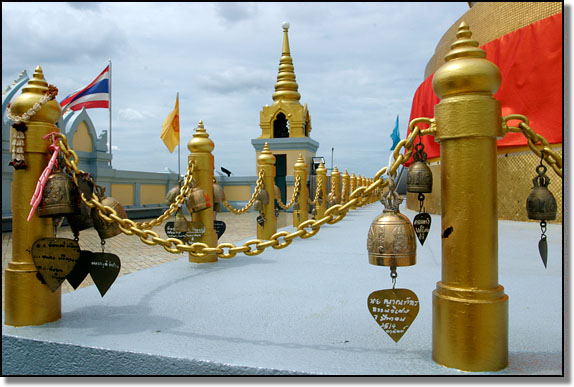Buddhism In A Nutshell - Chapter 10
Nibbana
The process of birth and death continues ad infinitum until this flux is transmuted, so to say, to Nibbãna-dhãtu, the ultimate goal of Buddhists.
The Pali word Nibbãna is formed of Ni and Vãna. Ni is a negative particle and Vãna means lusting or craving. "It is called Nibbãna, in that it is a departure from the craving which is called Vãna, lusting." Literally, Nibbãna means non-attachment.
It may also be defined as the extinction of lust, hatred and ignorance. "The whole world is in flames," says the Buddha. "By what fire is it kindled? By the fire of lust, hatred and ignorance, by the fire of birth, old age, death, pain, lamentation, sorrow, grief and despair it is kindled."
It should not be understood that Nibbãna is a state of nothingness or annihilation owing to the fact that we cannot perceive it with our worldly knowledge. One cannot say that there exists no light just because the blind man does not see it. In that well-known story, too, the fish arguing with his friend, the turtle, triumphantly concluded that there exists no land.
Nibbãna of the Buddhists is neither a mere nothingness nor a state of annihilation, but what it is no words can adequately express.
Nibbãna is a Dhamma which is "unborn, unoriginated, uncreated, and unformed." Hence it is eternal (dhuva), desirable (subha), and happy (sukha).
In Nibbãna, nothing is "eternalised", nor is anything "annihilated", besides suffering.
According to the Books, references are made to Nibbãna as Sopãdisesa and Anupãdisesa. These, in fact, are not two kinds of Nibbãna, but the one single Nibbãna, receiving its name according to the way it is experienced before and after death.
Nibbãna is not situated in any place nor is it a sort of heaven where a transcendental ego resides. It is a state which is dependent upon this body itself. It is an attainment (Dhamma) which is within the reach of all. Nibbãna is a supramundane state attainable even in this present life. Buddhism does not state that this ultimate goal could be reached only in a life beyond. Here lies the chief difference between the Buddhist conception of Nibbãna and the non-Buddhist conception of an eternal heaven attainable only after a death or a union with a God or Divine Essence in an after-life. When Nibbãna is realised in this life with the body remaining, it is called Sopãdisesa Nibbãna-dhãtu. When an Arahat attains Parinibbana, after the dissolution of his body, without any remainder of physical existence, it is called Anupãdisesa Nibbãna-dhãtu.
In the words of Sir Edwin Arnold:
"If any teach Nirvana is to cease
Say unto such they lie.
If any teach Nirvana is to live
Say unto such they err."
From a metaphysical standpoint, Nibbãna is deliverance from suffering. From a psychological standpoint, Nibbãna is the eradication of egoism. From an ethical standpoint, Nibbãna is the destruction of lust, hatred and ignorance.
Does the Arahat exist or not after death?
The Buddha replies: "The Arahat who has been released from the five aggregates is deep, immeasurable like the mighty ocean. To say that he is reborn would not fit the case. To say that he is neither reborn nor not reborn would not fit the case."
One cannot say that an Arahat is reborn as all passions that condition rebirth are eradicated; nor can one say that the Arahat is annihilated for there is nothing to annihilate.
Robert Oppenheimer, a scientist, writes: "If we ask, for instance, whether the position of the electron remains the same, we must say 'no'; if we ask whether the electron's position changes with time, we must say 'no'; if we ask whether the electron is at rest, we must say 'no'; if we ask whether it is in motion, we must say 'no'.
"The Buddha has given such answers when interrogated as to the conditions of man's self after death (Evidently, Oppenheimer is referring to the state of an Arahat after death.); but they are not familiar answers from the tradition of the 17th and 18th century science."

